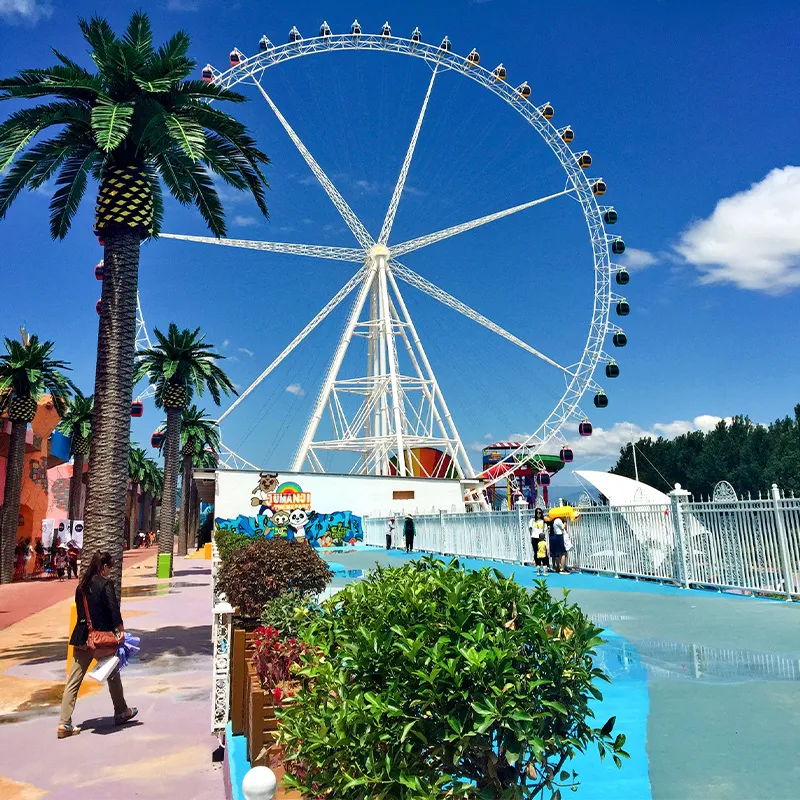- Albanian
- Arabic
- Belarusian
- Bengali
- Czech
- English
- French
- German
- Hebrew
- Hungarian
- Indonesian
- irish
- Italian
- Japanese
- kazakh
- Persian
- Russian
- Thai
- Uzbek
- Vietnamese
Exploring the Evolution and Popularity of Carousels in Contemporary Chinese Culture
Exploring the Carousel Culture in China
Carousels, often thought of as whimsical attractions for children, hold a special place in the hearts of people across the globe, and China is no exception. With its rich tapestry of cultural history and rapidly evolving entertainment landscape, the carousel has taken on unique forms and significance throughout Chinese society. This article explores the charm of carousels in China, their cultural symbolism, and their growing popularity as public attractions.
Historically, carousels, known as merry-go-rounds, originated in medieval Europe, where they served as training exercises for knights. The concept gradually evolved into the playful attractions we recognize today. In China, carousels began to appear in the 1980s and 1990s, coinciding with the nation’s economic reforms and the rise of amusement parks. This transition mirrored China’s broader cultural shift towards western influences, bringing in new forms of entertainment that appealed to children and families.
Exploring the Carousel Culture in China
One prominent aspect of carousels in China is their role as social and family gathering spots. Parks and amusement areas featuring carousels are often bustling with families enjoying a day out. The carousel serves as a shared experience that fosters connection between generations. Parents and grandparents delight in watching their children enjoy the ride, creating cherished memories that bridge the gap between age groups. This communal aspect speaks to a core value in Chinese culture—family unity and togetherness.
carousel in china

The popularity of carousels in China goes beyond mere entertainment. They have become symbols of nostalgia, evoking childhood memories for many adults. As cities rapidly modernize, carousels represent a fleeting element of the past, standing in contrast to high-rise buildings and fast-paced urban life. This nostalgia is often reflected in local festivals or cultural events, where traditional and modern carousels coexist, providing a space for people to reminisce while enjoying new experiences.
In recent years, the trend of incorporating technology into traditional attractions has also made its way into carnivals and amusement parks featuring carousels. Some parks have introduced immersive experiences that combine virtual reality with the classic carousel ride, offering riders an adventure that transcends the physical. This innovative approach attracts a tech-savvy younger demographic while keeping the allure of the carousel intact.
Moreover, carousels have also found a unique place in urban spaces as art installations. Various cities across China have embraced the idea of transforming carousels into artistic displays, with some public parks housing beautifully crafted carousels that blend functionality with art. These installations not only serve as a source of entertainment for children but also as a point of interest for artists and tourists alike, enhancing the cultural fabric of the community.
In conclusion, the carousel in China has transcended its original purpose of mere amusement to become a vibrant cultural fixture within society. It symbolizes a blend of modernity and tradition, serving as a metaphor for the country’s rapid growth while retaining deep-rooted values of family and nostalgia. As urban spaces continue to evolve, carousels will undoubtedly remain a beloved attraction, enchanting visitors both young and old, and representing the joyful spirit of Chinese culture.
-
Flume Ride-Hebei Zhipao Amusement Equipment Manufacturing Co., Ltd.|Thrilling Water Attraction&Customizable DesignJul.30,2025
-
Flume Ride - Hebei Zhipao Amusement Equipment | Water Coaster, Thrilling DescentJul.30,2025
-
Flume Ride - Hebei Zhipao | Thrilling Water AttractionJul.30,2025
-
Flume Ride: Thrilling Water Attraction by Hebei Zhipao|Log Flume Manufacturers&Flume Ride DesignJul.30,2025
-
Flume Ride-Hebei Zhipao Amusement Equipment Manufacturing Co., Ltd.|Thrilling Water Coaster, Safe DesignJul.30,2025
-
Flume Ride-Hebei Zhipao Amusement Equipment Manufacturing Co., Ltd.|Thrilling Water Attraction, Safe DesignJul.30,2025
